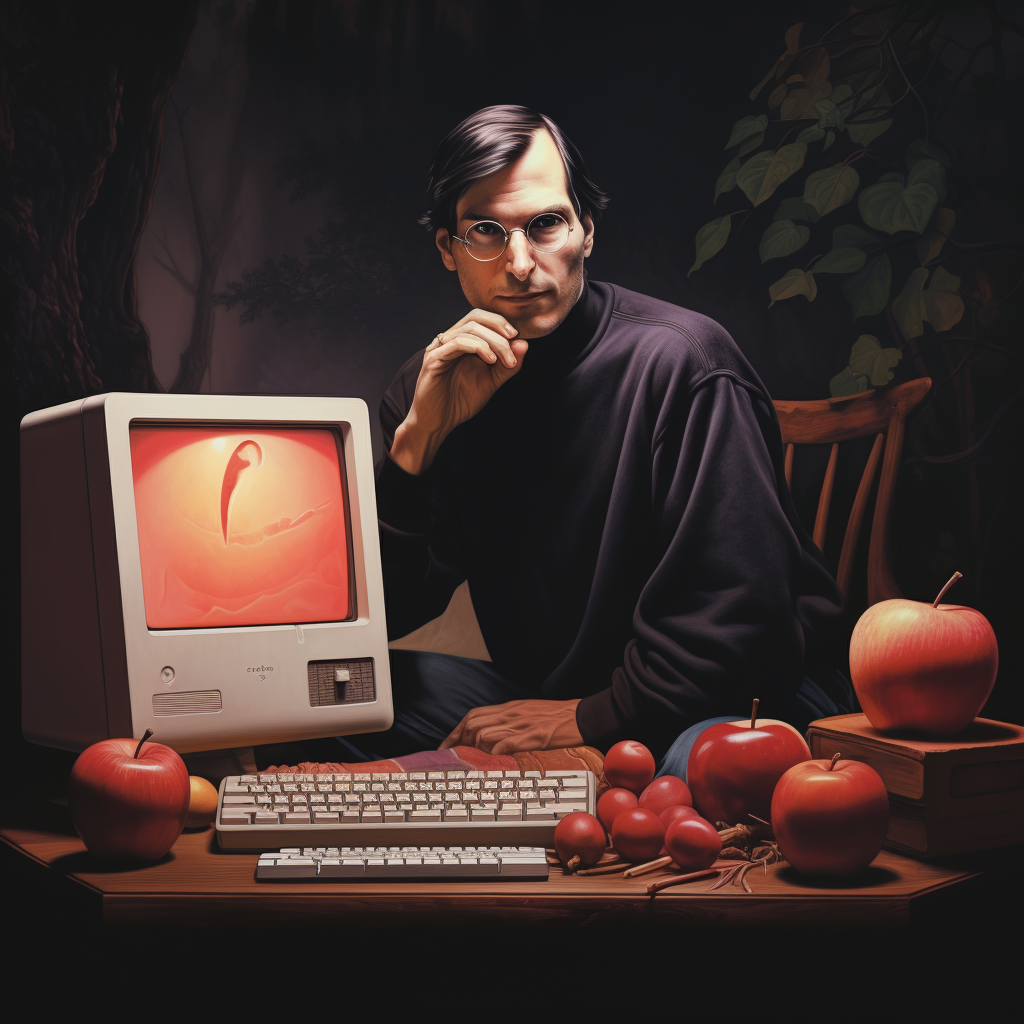Steve Jobs and the Apple Macintosh computer

In 1984, the landscape of personal computing was forever altered with the introduction of the Apple Macintosh. Spearheaded by Steve Jobs, this launch was not just a product release; it represented a paradigm shift in technology, usability, and design.
The Macintosh set new industry standards, embodying how visionary innovation can act as a catalyst for sweeping change. This moment in Apple’s history offers profound insights into the power of innovation to revolutionize an industry.
Factual Details of the Introduction of the Apple Macintosh
Year: 1984
Location: Cupertino, California, USA
Event: Launch of the Apple Macintosh
The Macintosh was unveiled with much fanfare, including a now-iconic Super Bowl commercial that positioned the Macintosh as a symbol of individuality and innovation. The Macintosh stood out for its graphical user interface, built-in screen, and mouse - features that were not common in personal computers at the time. This launch was a bold move by Steve Jobs and Apple, aiming to make computers more accessible and user-friendly to the general public.
Key Outcomes:
- The Macintosh revolutionized the personal computer industry by introducing a graphical user interface and mouse.
- It set new standards for what users could expect from personal computing.
- The Macintosh's launch helped position Apple as a leader in computer innovation and design.
Leadership Lessons from the Launch of the Apple Macintosh
1. Visionary Product Development:
- The development of the Macintosh under Steve Jobs’ leadership highlights the importance of visionary thinking in product development, aiming not just to meet current market needs but to anticipate and shape future trends.
2. Challenging Industry Norms:
- The Macintosh challenged the then-dominant paradigms of the computing world, demonstrating how leaders can drive change by challenging established industry norms and expectations.
3. Emphasizing User Experience:
- The focus on user experience with the Macintosh, from its graphical interface to its design aesthetics, underscores the importance of centering product development around the user experience.
4. Strategic and Memorable Marketing:
- The launch of the Macintosh showcased Apple’s innovative approach to marketing, highlighting how strategic and memorable marketing can enhance the impact of a product launch.
5. Building a Culture of Innovation:
- The creation and launch of the Macintosh reflect a culture of innovation at Apple, emphasizing the role of organizational culture in nurturing and realizing innovative ideas.
Concluding Thoughts
The launch of the Apple Macintosh stands as a pivotal moment in the history of technology, highlighting the transformative power of innovation. It exemplifies how a single product can redefine industry standards and user expectations, setting a new course for an entire sector.
Steve Jobs' role in this launch provides invaluable lessons for leaders on the importance of visionary product development, challenging the status quo, and the profound impact of centering user experience in innovation.
Your Reflection
Reflect on the impact of the Macintosh launch and consider:
- How can you incorporate visionary thinking into your product development processes?
- In what ways might you challenge existing norms and expectations within your industry?
- How can you ensure that user experience is at the forefront of your innovation efforts?
- What strategies can you employ to make your product launches memorable and impactful?



